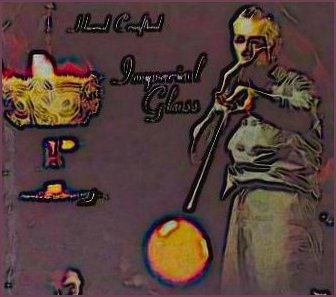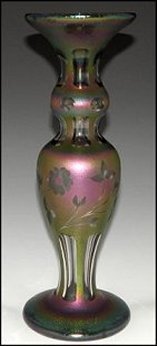Explore the Decor
 Lead Lustre was much less expensive than Free Hand, i.e. wholesale Free Hand had sold twelve pieces for $50.00 in the 1920’s, while the same $50.00 got you twenty-four pieces of Lead Lustre. For me and probably most others, cheaper, when it comes to art, equates to poorer quality and less desirability. While Free Hand undeniably will remain generally more expensive and more highly regarded than Lead Lustre, taking a closer look at Lead Lustre can substantially narrow that perception gap.
Lead Lustre was much less expensive than Free Hand, i.e. wholesale Free Hand had sold twelve pieces for $50.00 in the 1920’s, while the same $50.00 got you twenty-four pieces of Lead Lustre. For me and probably most others, cheaper, when it comes to art, equates to poorer quality and less desirability. While Free Hand undeniably will remain generally more expensive and more highly regarded than Lead Lustre, taking a closer look at Lead Lustre can substantially narrow that perception gap.
The quality of some Lead Lustre decors and the technical skill required to produce them matches Free Hand in every respect in my estimation - except for the skill needed to create the initial form.
I have therefore given some thought as to why Lead Lustre was so much less expensive than Free Hand to make. There are a number of variables not all of which relate to quality. The possibilities include:
- The number of artists capable of hand blowing the Free Hand forms, their rate of production and their salaries versus those that made Lead Lustre.
- Another factor might well have been a clever business model wherein potential wholesale buyers of Lead Lustre were encouraged to purchase assortments versus a more “individual piece” marketing strategy for Free Hand. Specifically the inclusion in an assortment of some relatively simple and easier to make non - cased, monochromatic pieces would drive down the average price for the assortment.
In this section I will discuss the composition of each of the 23 Lead Lustre documented decors.
Error
























